Idea by
Aneesha Dharwadker
Chicago Design Office
http://www.chicagodesignoffice.com
Call for ideas 2020
Crossing the Skyline
Crossing the Skyline
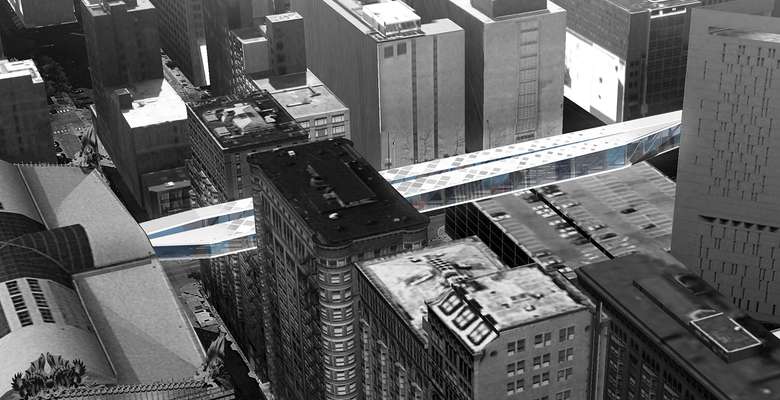
- Systemic changes
Since Piranesi’s Carceri D’Invenzione, the prison has held darkness, mystery, and fear in the architectural imagination. Bentham’s Panopticon made the prison frame psychological games between inmates and guards; Foucault’s Discipline and Punish linked prison architecture to larger power structures and social attitudes towards punishment. Today, as our collective moral awareness increases, we understand that prison systems everywhere need to be rethought.
Future architectures can transform prisons into places of learning and rehabilitation. “Crossing the Skyline” links Chicago’s largest public library to a nearby federal prison with a library annex: a hybrid space where the public, the incarcerated, and their families can co-exist. Now, this site-specific design can expand to a systemic scale. This project places architects in the criminal justice design conversation, and offers hybrid architectural typologies for social reform that don’t yet exist in our environment.
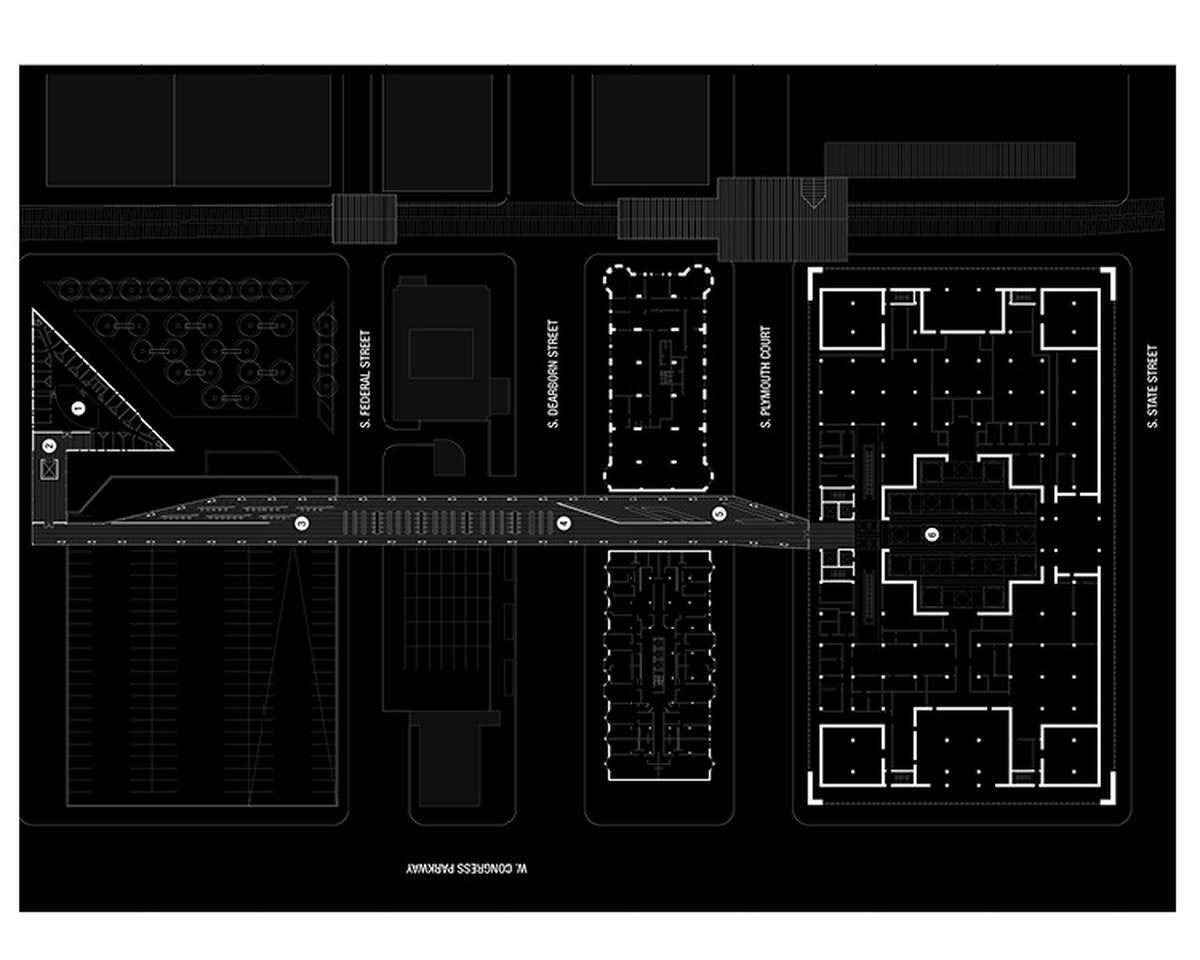
The proposal links the 9th floor of Harold Washington Library to the 12th floor of the Metropolitan Correctional Center in downtown Chicago.
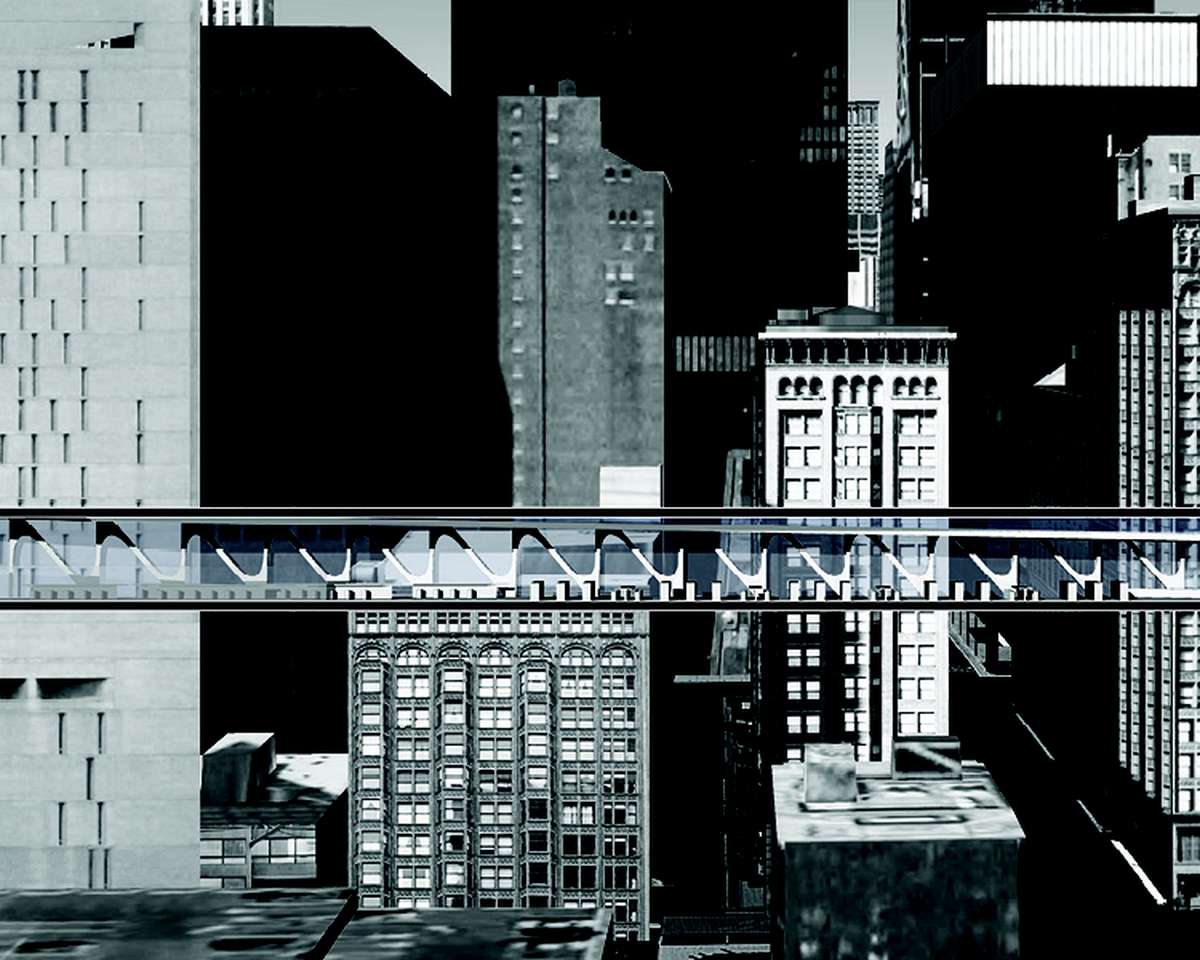
The building structure is inspired by Chicago's famous bascule bridges that span the Chicago River. The horizontal building type is unique in the context of Chicago's vertical downtown fabric.
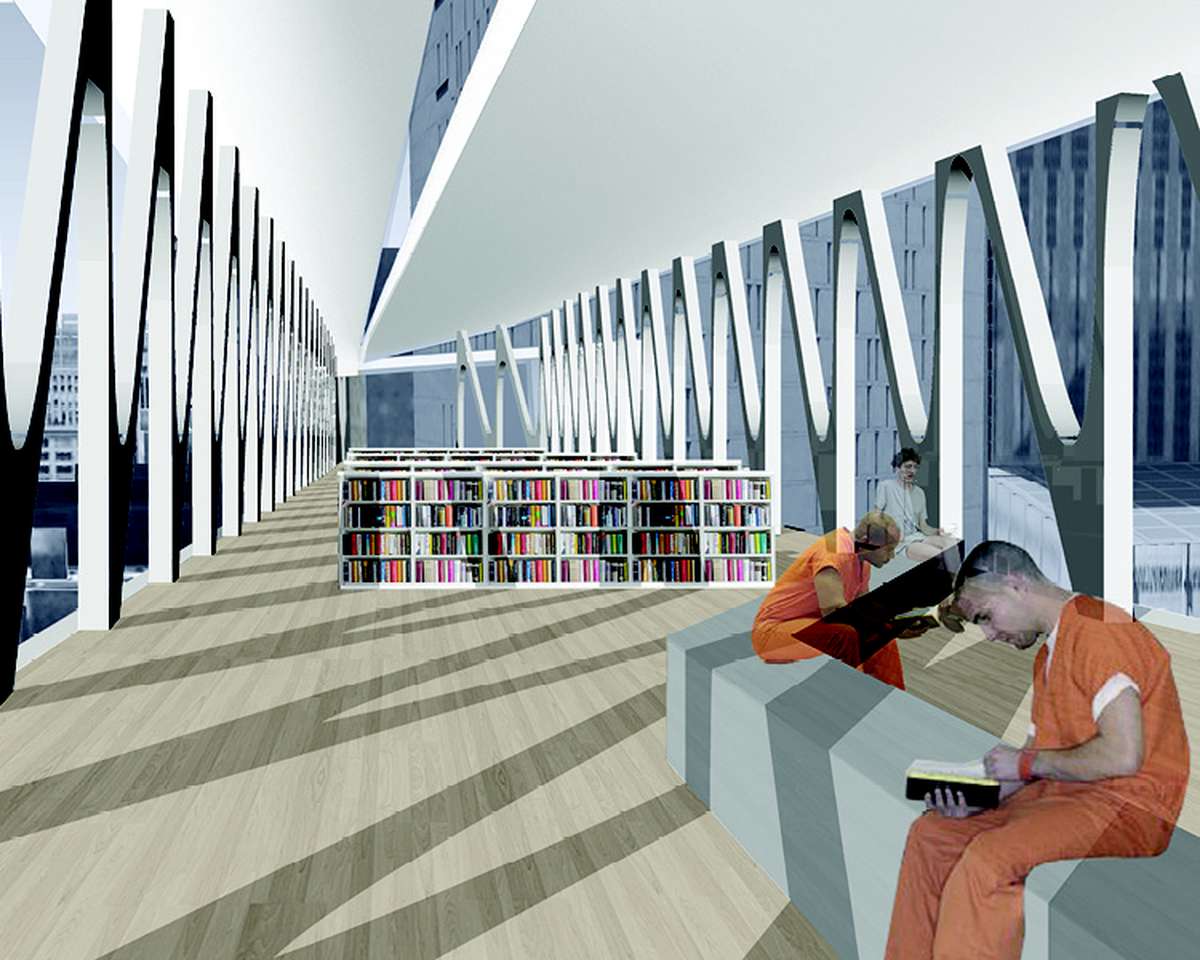
The bridge interior is spare, focusing on the primary activities of reading and quiet study. The open and transparent space contrasts the heavy, opaque designs of the existing prison and library on site.
Crossing the Skyline
Crossing the Skyline

- Systemic changes
Since Piranesi’s Carceri D’Invenzione, the prison has held darkness, mystery, and fear in the architectural imagination. Bentham’s Panopticon made the prison frame psychological games between inmates and guards; Foucault’s Discipline and Punish linked prison architecture to larger power structures and social attitudes towards punishment. Today, as our collective moral awareness increases, we understand that prison systems everywhere need to be rethought.
Future architectures can transform prisons into places of learning and rehabilitation. “Crossing the Skyline” links Chicago’s largest public library to a nearby federal prison with a library annex: a hybrid space where the public, the incarcerated, and their families can co-exist. Now, this site-specific design can expand to a systemic scale. This project places architects in the criminal justice design conversation, and offers hybrid architectural typologies for social reform that don’t yet exist in our environment.
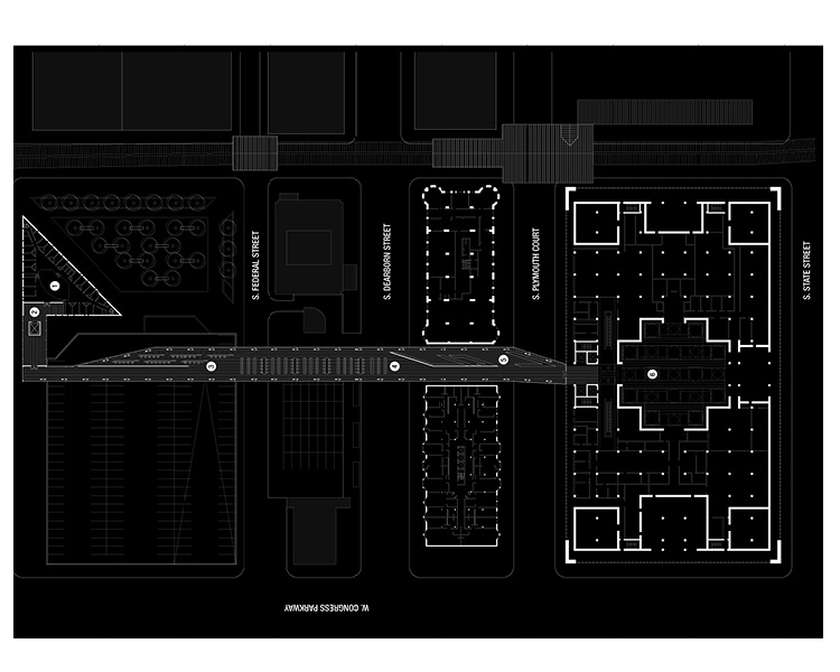
The proposal links the 9th floor of Harold Washington Library to the 12th floor of the Metropolitan Correctional Center in downtown Chicago.
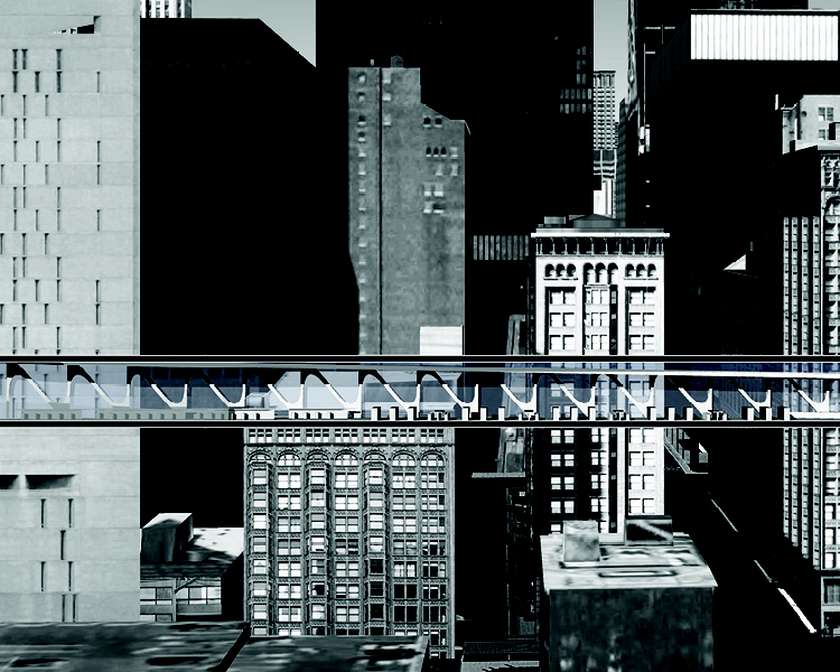
The building structure is inspired by Chicago's famous bascule bridges that span the Chicago River. The horizontal building type is unique in the context of Chicago's vertical downtown fabric.
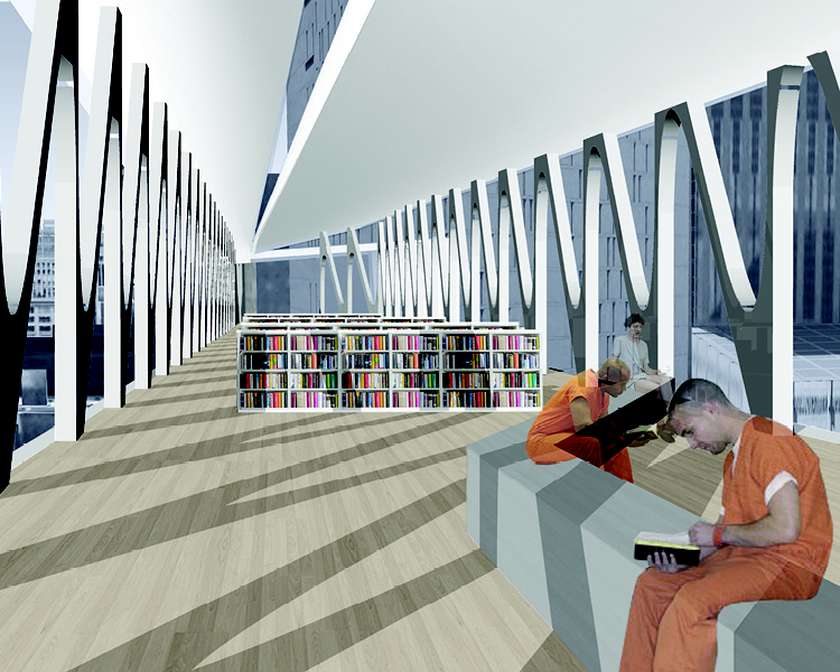
The bridge interior is spare, focusing on the primary activities of reading and quiet study. The open and transparent space contrasts the heavy, opaque designs of the existing prison and library on site.